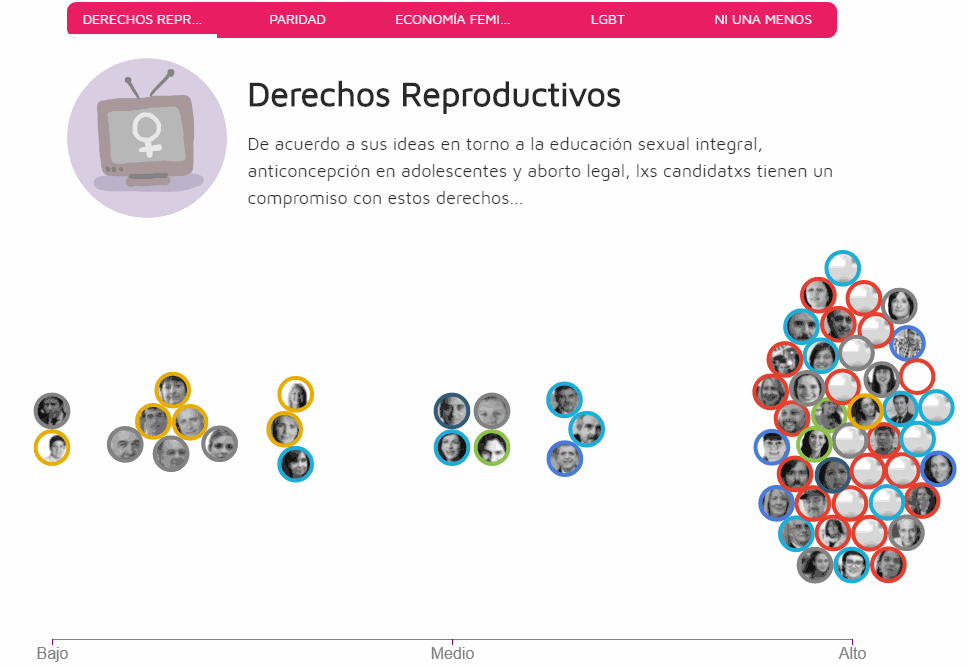
Organization: Ecofeminita (Argentina), a nonprofit organization that publishes data and articles about women’s rights, with a special focus on economic empowerment.
Project: Feminindex, a crowdsourced voter guide that ranks and visualizes politicians’ positions on reproductive rights, equal representation, feminist economics, LGBTQ+ rights and gender-based violence.
Year: 2017
Link: Archive | Data visualization
How it works: We created a survey using Google Forms with questions on different gender-related issues. It would only accept three answers –for, against, abstains– to show what the candidate’s action would be if that person was elected to Congress and had to vote on those topics. We sent the survey to the candidates’ campaigns. If we didn’t have a response from them, we looked for public statements. Due to the small size of the organization, we asked our followers to help us with that process. Once we had enough data, we created an interactive visualization showing the level of the candidates’ commitment to each issue. Users could navigate each category and find the candidates’ answers to each question.
My role: As Audience Coordinator, I was in charge of crowdsourcing the data for this visualization. To do that, we turned to our followers on social media to help us find on-the-record statements that provided a clear idea of the politicians’ positions.
Impact: As a result, these topics started to appear in the news and in the political coverage of the elections in Argentina. FeminIndex was a crucial tool to discover and know ideas, trends and opinions that were not part of the public sphere until that moment. This motivated other journalists to seek concrete answers about abortion, for example. FeminIndex was Argentina’s first resource of its kind, mapping all these pressing gender-related debates in one place.
Based on this experience, our team worked with Equipo Latinoamericano de Justicia y Género (ELA) to develop a toolkit for journalists that offered guidance on how to ask questions from a gender perspective.